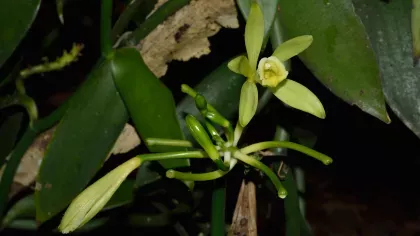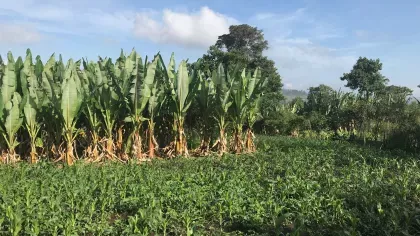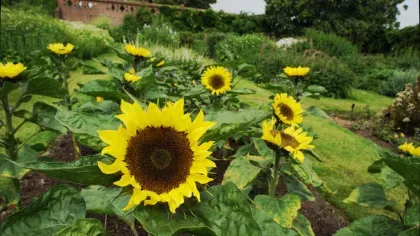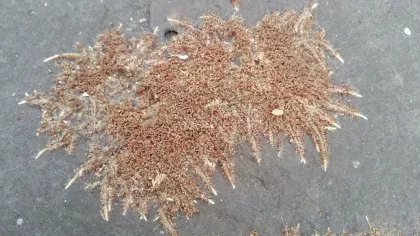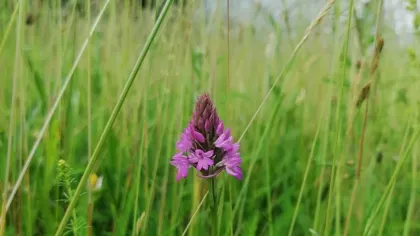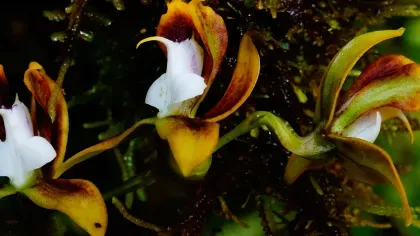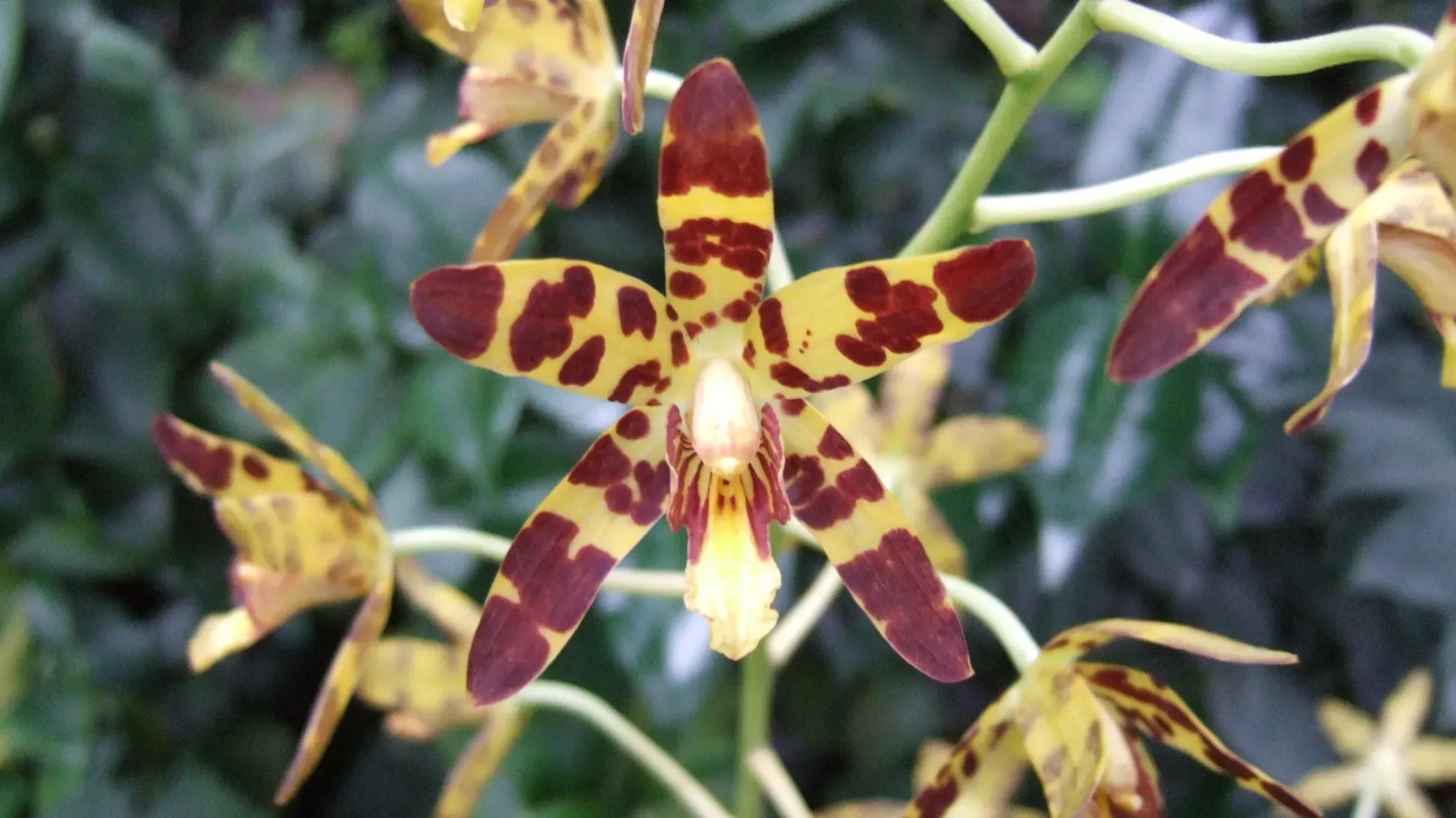
Leopard orchid
The leopard orchid makes its home in the branches of trees, feeding off dead leaves and other debris it can catch in its aerial roots.
Like many other orchid species, the leopard orchid is an epiphyte, meaning it lives in the branches of other plants without harming them.
The leopard orchid is found across the tropical and central regions of Africa, and is popular in both traditional African medicines and the collections of orchid fanatics.
But overcollection of the species, along with habitat loss and land use change have led to the leopard orchid becoming at risk of extinction.
The leopard orchid is sometimes known as a ‘trash-basket’ orchid, as its aerial roots grow together to form a bucket which catches dead leaves.
Plant description
The leopard orchid is an epiphyte in tree branches with thin, white aerial roots that form a basket shape to catch falling leaves and other debris. This is broken down by fungi that live together with the orchid, and then absorbed by the roots of the plant. The long stems have yellow spindle-shaped swellings called pseudobulbs which can grow up to 60cm long.
Six or seven green, leathery leaves grow on alternating sides of the top of the pseudobulb, between 15 to 50cm long. Flowering stems grow from the top of the pseudobulbs, up to 85cm long, and can hold up to 100 flowers each. The flowers are yellow with dark brown spots and around 3cm across. They have a herbal and honey-like fragrance.
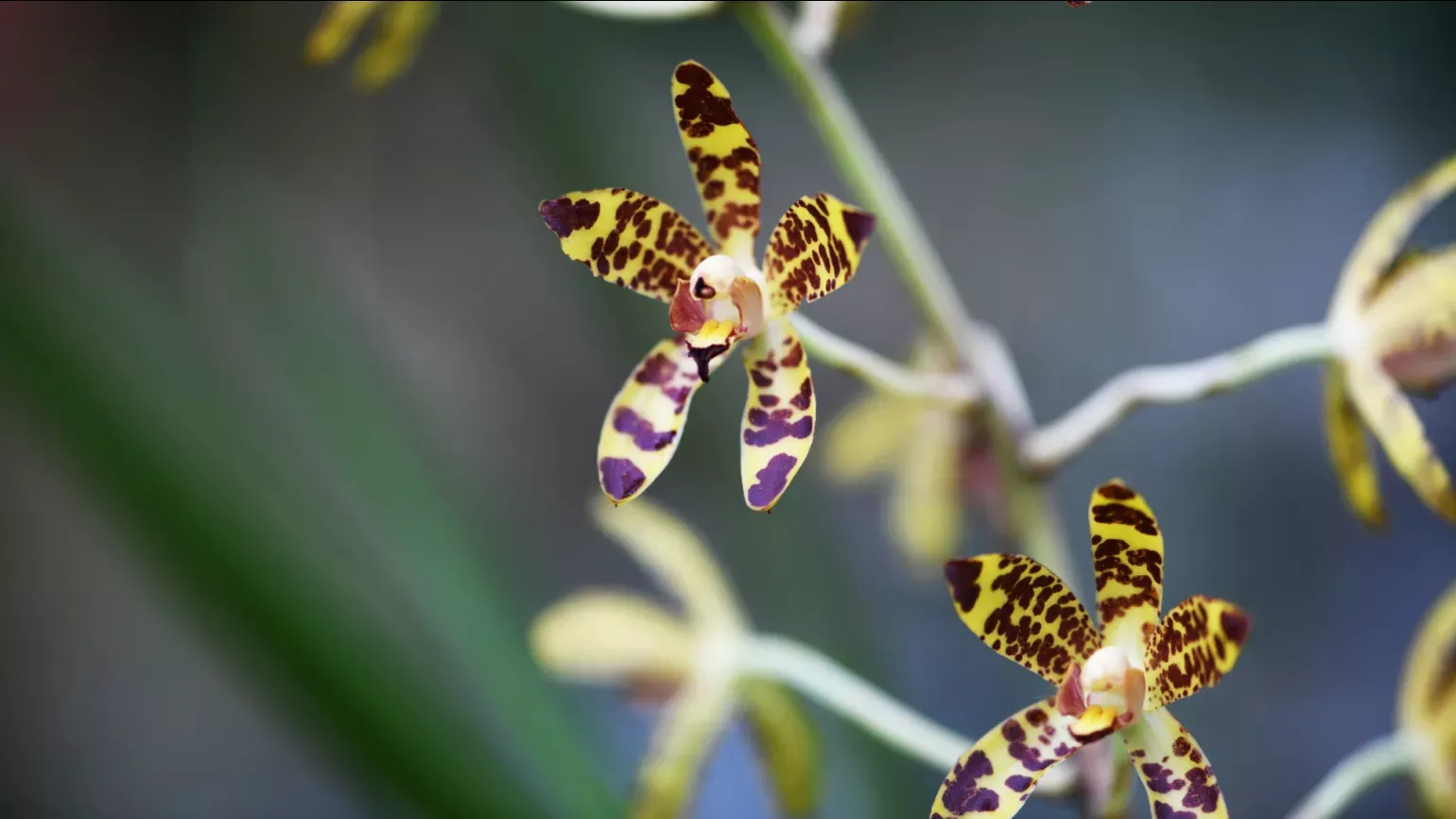
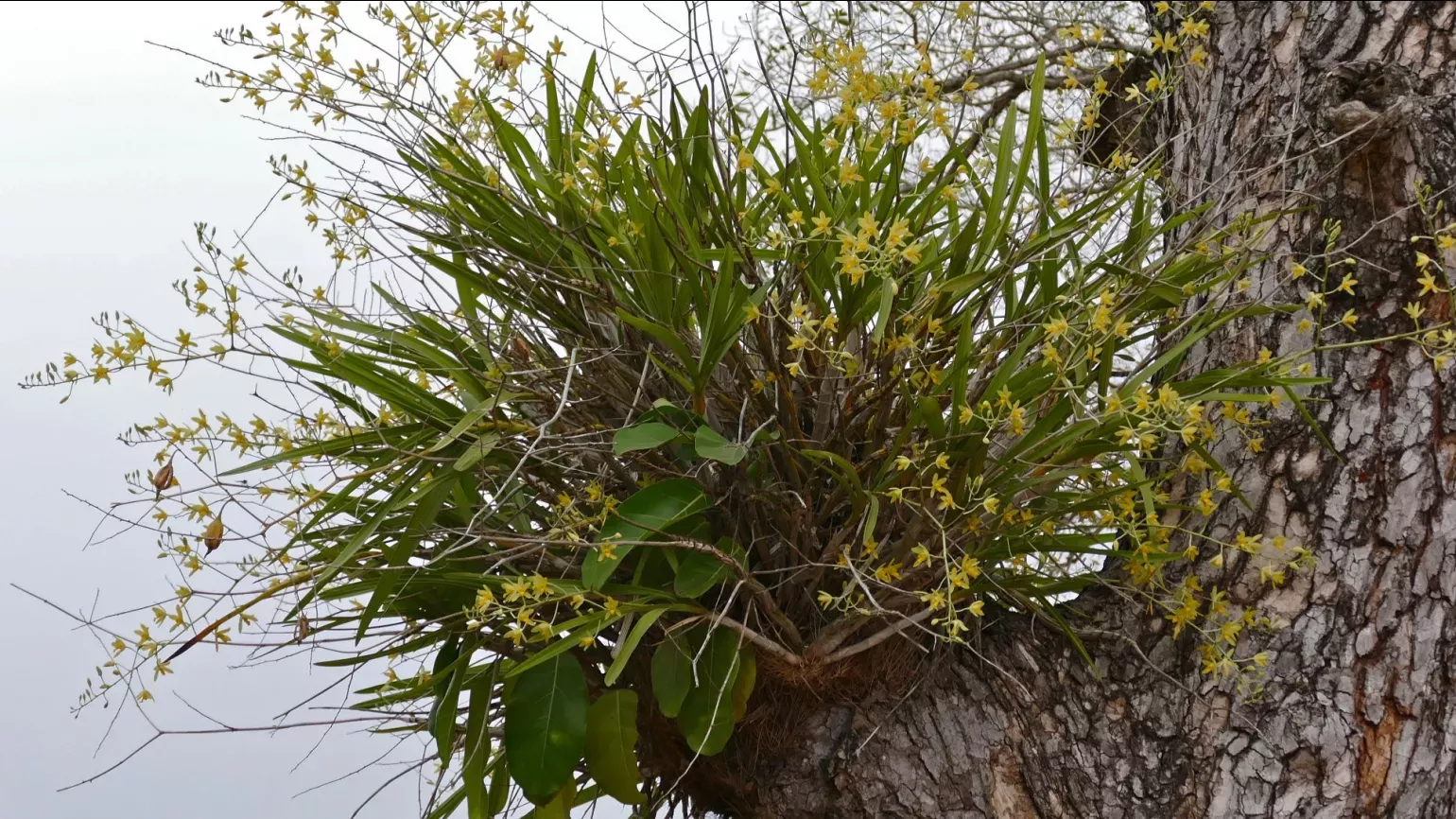
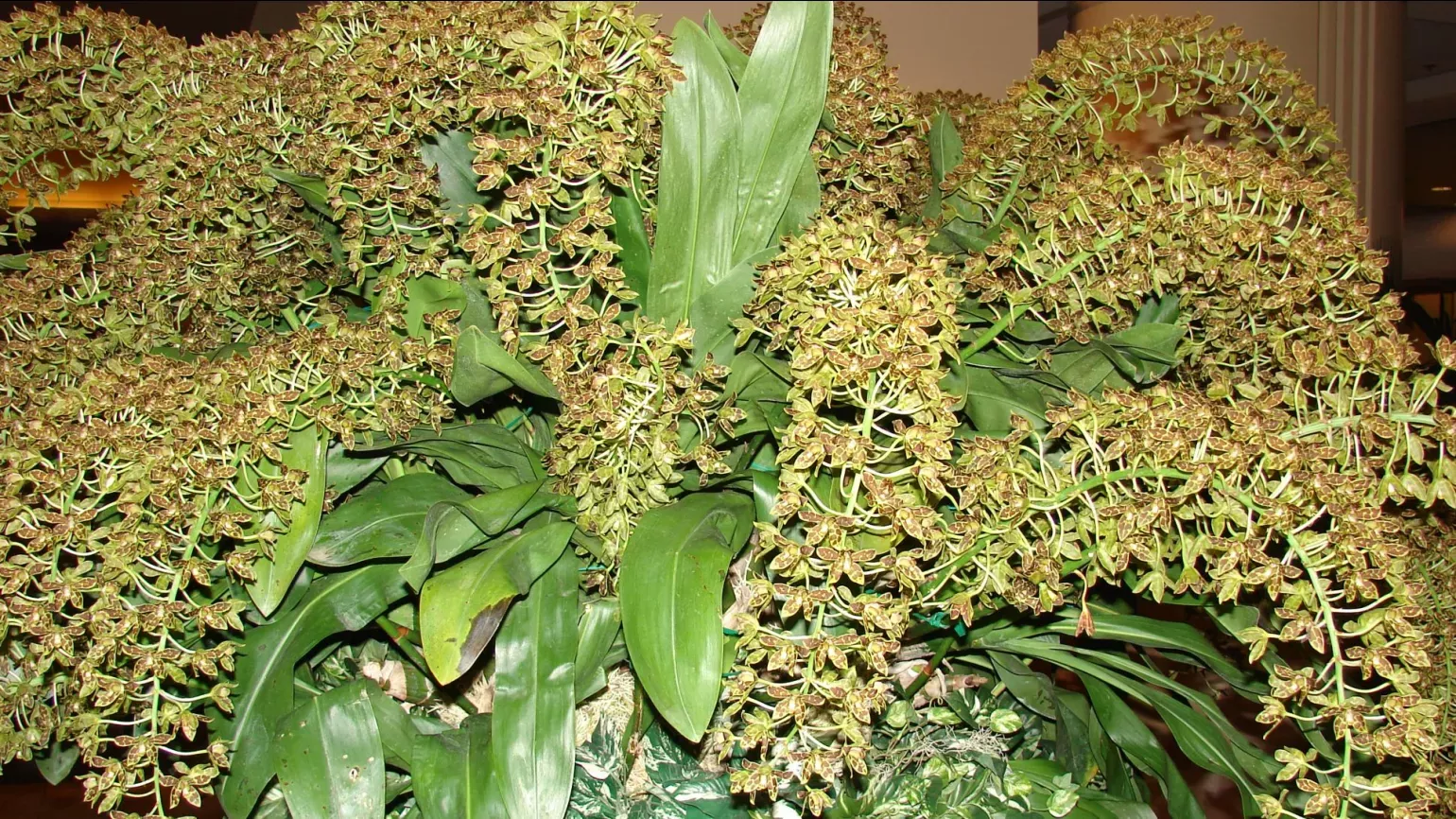
Did you know?
The leopard orchid is the only species in the genus Ansellia, which is named after John Ansell, who brought the first specimens to Europe.
The pseudobulbs on the stems store water and nutrients, giving the orchid resilience during times of drought
Where in the world?
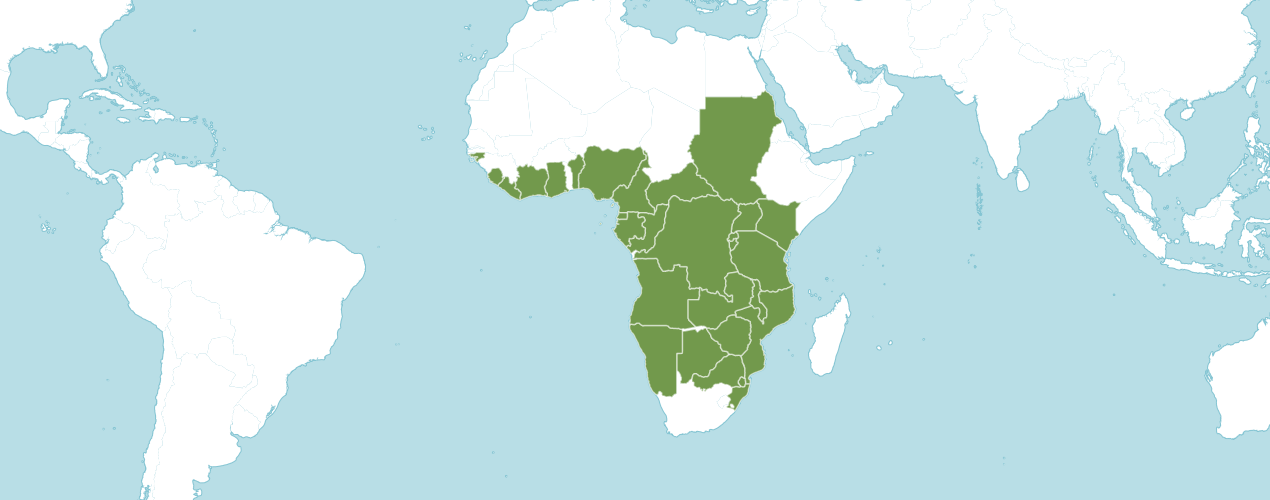
Found on coasts and rivers in the branches of trees, usually at elevations lower than 700m.
